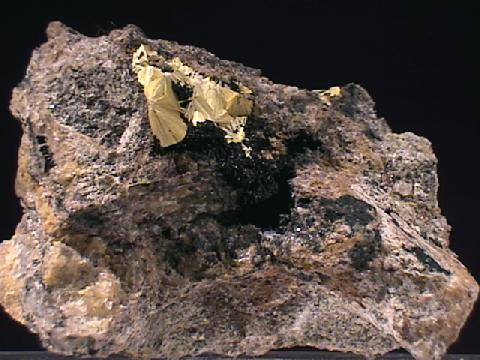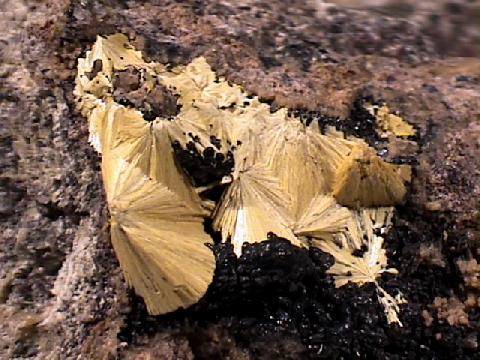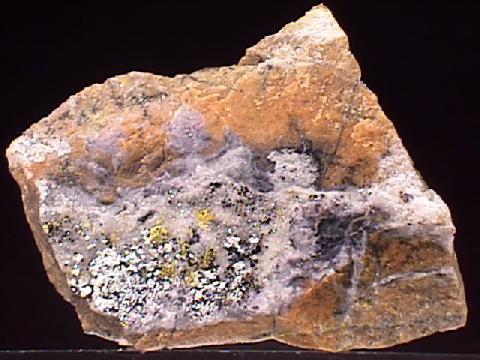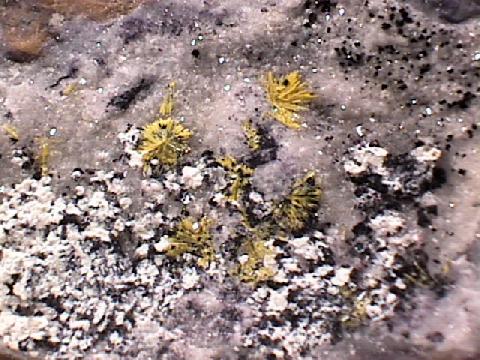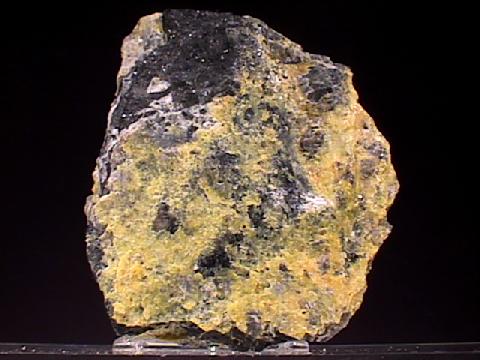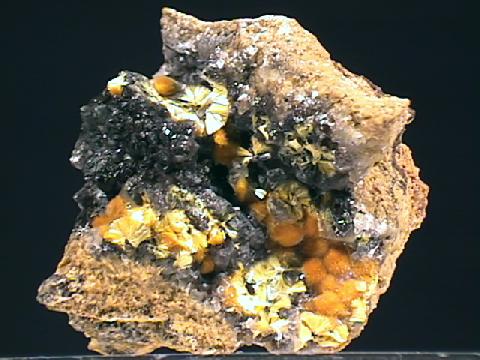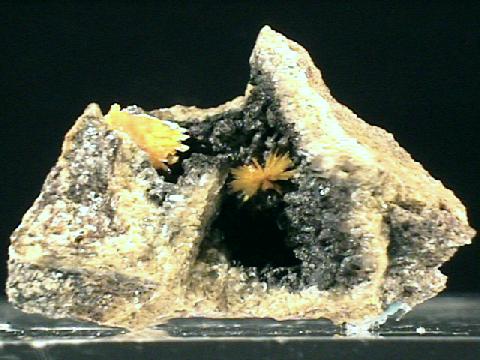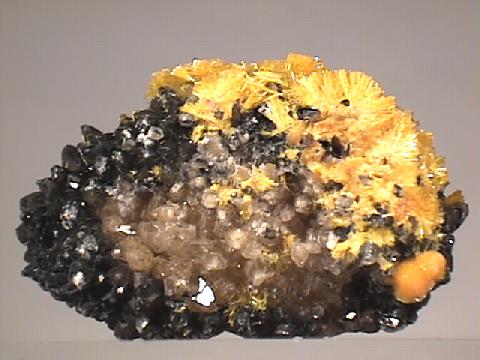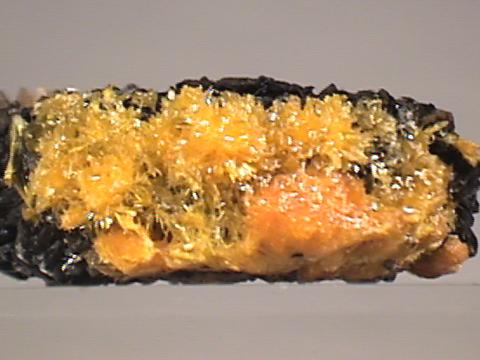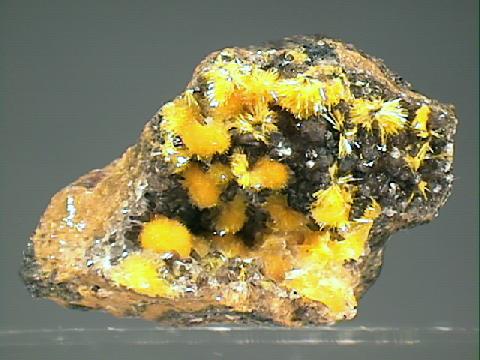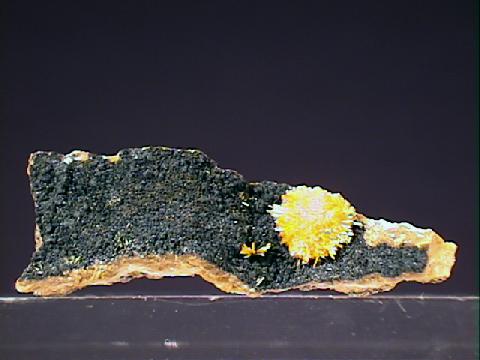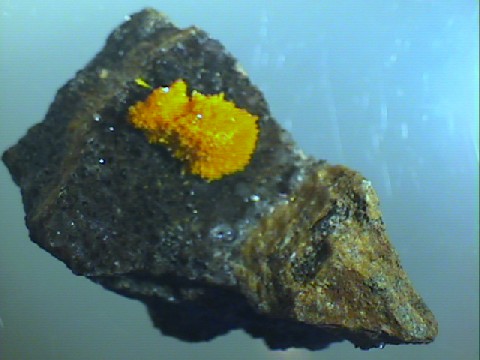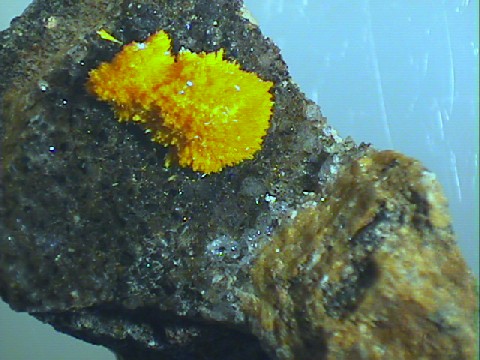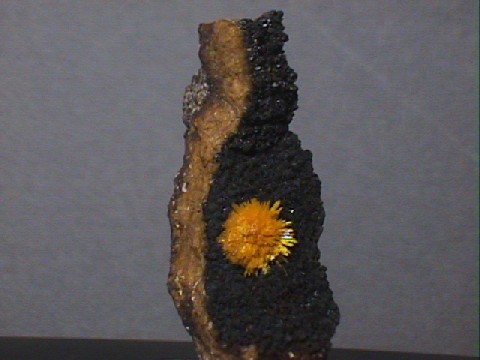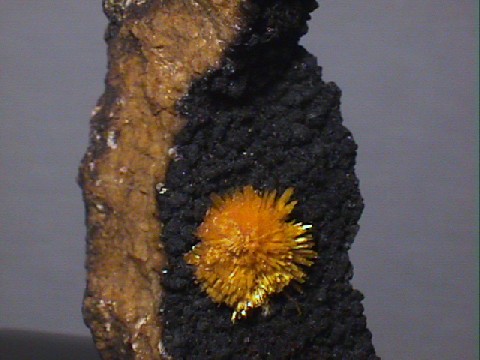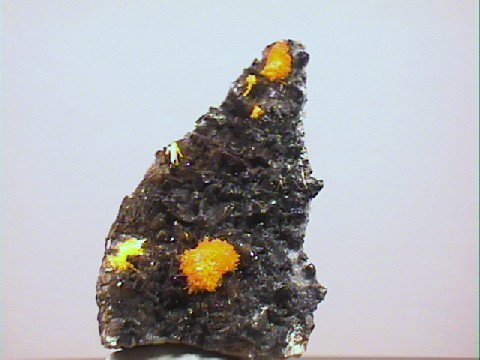 THE
MINERAL BOLTWOODITE
THE
MINERAL BOLTWOODITE
- Chemistry: K2(UO2)2(SiO3)2(OH)2 - 3H2O, Hydrated Potassium Uranyl Silicate Hydroxide.
- Class: Silicates
- Subclass: Nesosilicates
- Uses: mineral specimen and a very minor ore of uranium.
Specimens
Boltwoodite is a locally common mineral but in general it is quite rare. It forms from the oxidation and alteration of primary uranium ore minerals. It forms crusts that are found on uranium bearing sandstones. The crusts have a yellowish color and a vitreous or silky to pearly luster.
Remember, this is a radioactive mineral and should be stored away from other minerals that are affected by radioactivity and human exposure should be limited.
PHYSICAL CHARACTERISTICS:
- Color is yellow to pale yellow.
- Luster is vitreous to silky or pearly.
- Transparency: Crystals are transparent to translucent.
- Crystal System: Monoclinic.
- Crystal Habits are limited to crusts and tufts of fine acicular crystals often found on uranium bearing sandstones.
- Hardness is 3.5 - 4.
- Specific Gravity is approximately 3.6 - 4.3 depending on the amount of water (above average for translucent minerals)
- Streak is pale yellow.
- Associated Minerals are uraninite and other primary uranium minerals.
- Other Characteristics: Strongly radioactive.
- Notable Occurrences are limited to Pick's Delta mine, San Rafael Swell, Emory Co., Utah and Coconino County, Arizona, USA.
- Best Field Indicators are environment of formation, luster, color, locality and of course radioactivity.

